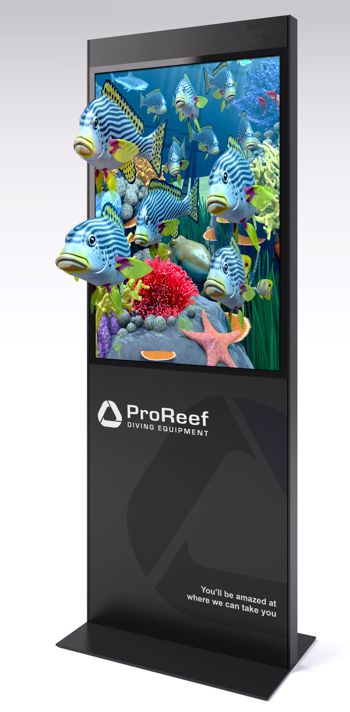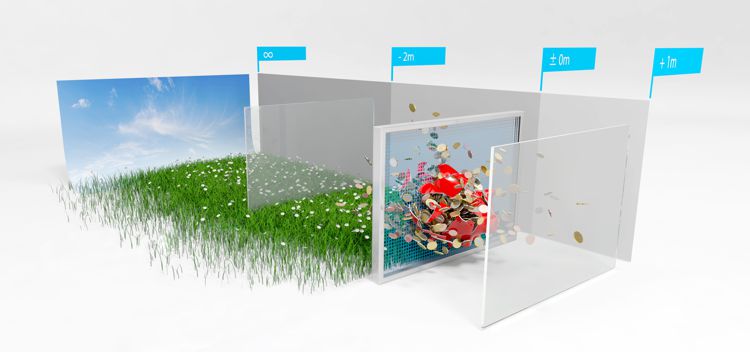3D graphic lightbox

W&Co is the sole UK distributor of a new 'ground breaking' illuminated 3D graphic technology that allows you to see in 3D with 'extraordinary' depth of field without 3D glasses.
When used on the street or in shopping malls it 'completely captures the attention of shoppers/pedestrians so would be perfect for promotional signs in retail, cinemas, showrooms, airports', says Adam Vanovitch, Managing Director, W&CO. He said; "It's a must for any advertiser that wants to get maximum interest from customers in their products/services.
"Excitingly we have one of the 3D graphic light boxes in our showroom on loan from the inventor for a few weeks to generate interest, it's amazing to see it in real life 3D rather than on a computer screen!"
The product is at base level a super bright LED light box which is then used to back light a special 3D image that can be viewed without glasses.
The technology used is a unique form of 3D imaging where objects appear to physically float in front of the screen to the extent that viewers believe they can actually grab the displayed objects.
The depth view is also infinite so the overall effect is 'quite stunning'. Small steps to the sides and up and down allow the viewer to fully immerse themselves in the 3D image and capture different viewing angles to amazing effect.
The ideal viewing distance is about three meters; however the 3D image also 'looks' equally realistic from greater distances. The effect is the most intriguing, when the viewer approaches the 3D image head on.
www.w-co.co.uk/3d-led-lightboxes.php
The technology
The 3D displays are manufactured using a patented micro lens procedure which is similar to the way in which 3D postcards work but on a more advanced level to give an even more realistic and impressive effect.
- Step 1: It begins with an image. A computer generated 3D model is then rendered from this image from 30,000 different viewing angles.
- Step 2: These images are output onto a special film as a 'grid'. If you imagine looking at a room through a keyhole and then there was another keyhole directly next to this one which would allow you to view the same room at a slightly different angle, this is essentially how the grid works – 30, 000 tiny keyholes side by side!
- Step 3: The final image grid is integrated into a sandwich of different lens plates. The lens plates feature 250,000 micro-lenses per square metre. Each match head size lens displays the complete image but fractionally shifted in perspective thus turning the image into a 3D object.
- Step 4: The final layered optic lens is then backlit with LED's to ensure complete independence from existing lighting conditions.

